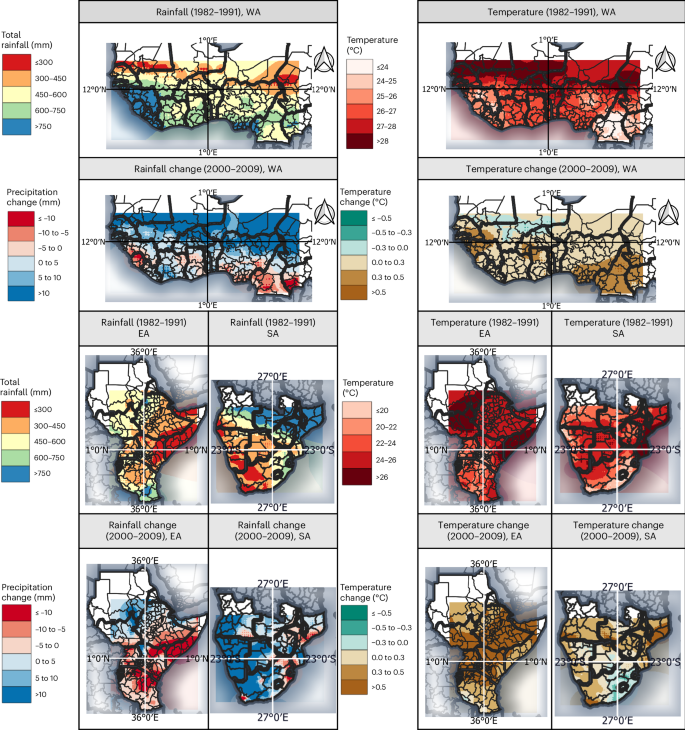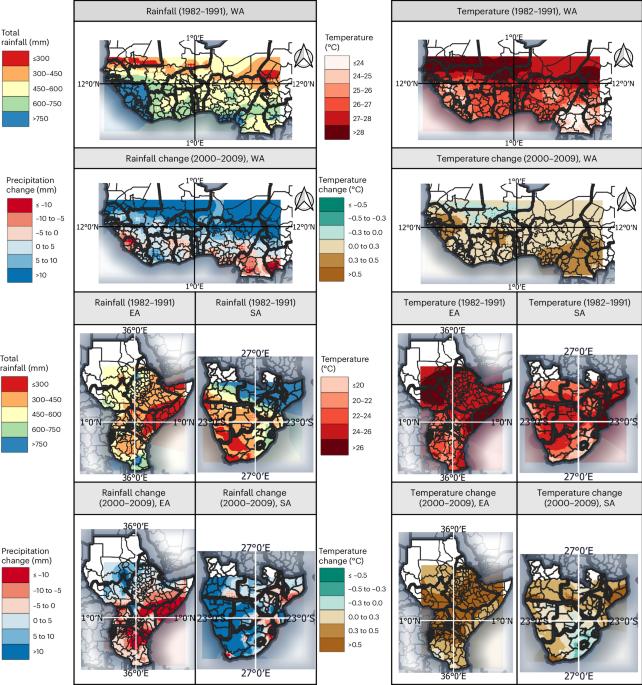Intra-growing season dry–wet spell pattern is a pivotal driver of maize yield variability in sub-Saharan Africa
IF 23.6
Q1 FOOD SCIENCE & TECHNOLOGY
引用次数: 0
Abstract
Climate variability plays a crucial role in the annual fluctuations of crop yields, posing a substantial threat to food security. Maize, the main cereal in sub-Saharan Africa, has shown varied yield trends during increasingly warmer growing seasons. Here we explore how sub-seasonal dry–wet spell patterns contribute to this variability, considering the spatial heterogeneity of crop responses, to map weather-related risks at a regional level. Our results show that shifts in specific dry–wet spell patterns across growth stages influence maize yield fluctuations in sub-Saharan Africa, explaining up to 50–60% of the interannual variation, which doubles that explained by mean changes in precipitation and temperature (30–35%). Precipitation primarily drives the onset of dry spells, while the influence of temperature increases with event intensity and peaks at the start of the growing season. Our large-scale, data-limited analysis approach has the potential to inform climate-smart agriculture in developing regions. Maize yield variability in sub-Saharan Africa has important implications for food security and livelihoods. By combining the time specificity of weather-related impacts on crops and different agroclimatic zones, this study shows that shifts in sub-seasonal dry–wet spell patterns are a major contributor to this variability.


生长季节内的干湿咒模式是撒哈拉以南非洲玉米产量变化的关键驱动因素
气候多变性在作物产量的年度波动中起着至关重要的作用,对粮食安全构成了巨大威胁。玉米是撒哈拉以南非洲地区的主要谷物,在日益变暖的生长季节中呈现出不同的产量趋势。考虑到作物反应的空间异质性,我们在此探讨了亚季干湿咒模式是如何导致这种变化的,从而绘制出区域层面与天气相关的风险图。我们的研究结果表明,不同生长阶段特定干湿咒模式的变化会影响撒哈拉以南非洲的玉米产量波动,可解释高达 50-60% 的年际变化,是降水和温度平均变化(30-35%)的两倍。降水主要驱动干旱期的到来,而温度的影响则随着事件强度的增加而增加,并在生长季节开始时达到顶峰。我们这种大规模、数据有限的分析方法有望为发展中地区的气候智能型农业提供信息。
本文章由计算机程序翻译,如有差异,请以英文原文为准。
求助全文
约1分钟内获得全文
求助全文

 求助内容:
求助内容: 应助结果提醒方式:
应助结果提醒方式:


